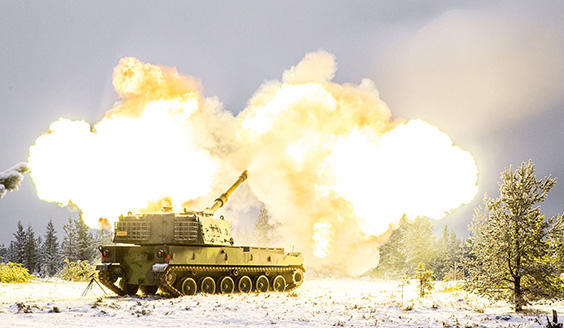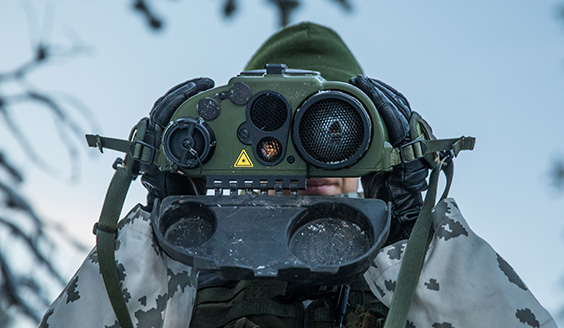The 100-year old Field Artillery Now and in the Future

The first steps of independent Finland’s field artillery go together with the foundation of the Artillery School. Both are considered to have been founded on 7 February 1918.
On that day the General Headquarters published a notice asking all of those who had completed their matriculation examination and had technical training to sign up for the artillery. Supreme Commander Mannerheim accepted Lieutenant Colonel Vilho Nenonen’s proposal to establish an Artillery School in Pietarsaari on that same date. The foundation of Finland’s field artillery was then the two guns of a battery that had been established as Oulu had been captured from the Reds in the Finnish Civil War. We have come a long way since then to where we are today.
The main task of the artillery is to support operational forces with fires and cause casualties to the enemy. Our artillery has been developed consistently and in its entirety to fulfil this task. The development has taken all areas in to account and particularly the fact that our large reserve and field army is based on general conscription. Today, Finnish field artillery is a versatile and modern branch that offers our conscripts interesting and challenging tasks and unforgettable experiences.

In order for the artillery to have an effect on a target, the target must be located precisely. For target acquisition we take advantage of the newest technology that enables locating the target precisely and quickly, both in daytime and night-time conditions. Our target acquisition and observation systems are state-of-the art globally and enable target acquisition for digital fires. Our ability to use fires is still exceptionally good. The methods that were developed by Nenonen, who would later become a general, allow concentrating fires on a single target simultaneously. The same methods are applied today. The training and skills of a Finnish forward observer are first-rate. Here we have much to give also to our international partners.
Also in fire direction we rely on domestic know-how. Our fire direction software is advanced and enable a very versatile use of fires. Today’s software enables even a situation where different guns of the same firing unit are shooting different fire missions to different areas. This makes it possible to use fires quickly in a wide area. With ordnance supplied by our domestic partners we are able to achieve a range of 40 kilometres. Our choice of ordnance is versatile and we also have anti-tank-role ordnance in use.
With the purchase of the K9 Thunder armoured howitzers the capability of our artillery improves even more. With the mobility and long shooting range of the Thunder we get new deep fires abilities to complement the rocket launchers already in use. The K9 has a genuine "shoot and scoot" capability, which makes counter-battery fire difficult.
The 100-year old Artillery School has two important functions within the branch: training personnel and functional development. In order to take full advantage of the latest technology, the branch basic training given to professional soldiers must be of high quality. Because the development is continuous, the knowledge and skills of the personnel have to be updated constantly. Learning is a life-long process. Also the functional development of the branch is very important. Safety regulations and different manuals must be up-to-date so that the training is safe and effective. Another part of functional development is the planning and command of large live-fire exercises, since they enable directing the training of artillery regiments to the direction stated by the branch leadership. That is why we always try to find the best and most skilled people within the branch to be the staff of the Artillery School in order to fulfil these tasks. We have to achieve much with a small number of personnel.
Our 100-year old branch is in good condition and it has a bright future. There are several projects going on in the Army that develop the different areas of artillery capacity even further. Mill - metre - second. These values do not change. The artillery will complete its mission with precision and at the right time, now and in the future.
Inspector of Artillery Colonel Pasi Pasivirta
Commandant of the Artillery School, Lieutenant Colonel Petri Majuri



